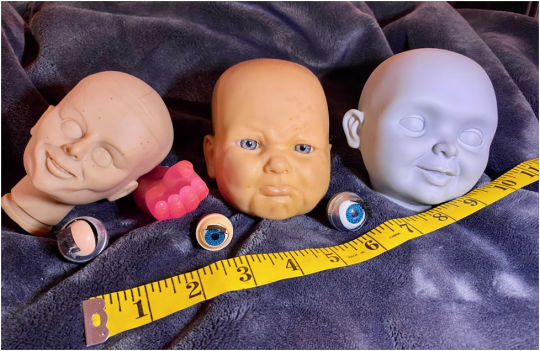Don't wanna be here? Send us removal request.
Text
Why Doll Manufacturing Still Relies on Handcrafting in an Automated AgeBy John Charles

As industries race toward automation, doll makers are doubling down on craftsmanship. And that may be their biggest asset.
In a global economy increasingly dominated by AI, robotics, and hyper-efficient production lines, one sector continues to operate with surprising reliance on human hands: doll manufacturing. Despite rapid technological advancement and a projected $38.7 billion global toy market by 2028, according to Business Research Insights, much of the doll industry still functions like it’s 1965.
“People assume dolls are made by robots,” says toy expert Mike Drake. “But the reality is far more analog.” Drake, a consultant for both manufacturers and collectors, describes the doll-making process as one built on patience, skill, and precision—qualities not easily replicated by machines.
The process begins with rotocasting, where vinyl is molded into limbs and torsos. Once set, these parts are assembled manually. Hair, usually made from nylon or kanekalon, is meticulously sewn into the scalp by hand—a time-consuming procedure that explains why lower-cost dolls often opt for molded or painted hair instead.
Facial features—lips, eyes, blush—are not printed en masse, but painted using three-dimensional stencils called masks. Even with the aid of laser-cutting technology for clothing patterns, stitching, accessorizing, and dressing remain deeply manual endeavors. “Even packaging is hands-on,” Drake adds. “There’s no robot wrapping up these dolls.”
This is not a refusal to modernize. Rather, it’s a strategic alignment with quality, cost, and consumer expectations. “You can't automate nuance,” Drake notes. “People buy dolls because they evoke emotion. That emotional detail—expressive eyes, perfect curls, precise blush—comes from the human touch.”
That attention to detail is particularly prized in the collectible and designer toy segments. Factories like Hongxing Vinyl Toy Factory in China are becoming go-to production partners for artists and brands producing limited-edition, high-end designer dolls and figures. Known for collaborating on boutique vinyl art toys, Hongxing exemplifies how Chinese manufacturing has evolved beyond mass production to include bespoke craftsmanship for niche luxury markets.
Still, automation remains elusive for mainstream doll lines. The cost of fully automating complex, small-scale movements and finishes far outweighs the benefits—at least for now. Budget-friendly dolls tend to cut corners with molded hair and simplified paint jobs, but mid-range and luxury products maintain manual standards.
Much of this production occurs in Asia, particularly China, which has become the modern hub for global doll manufacturing. But this isn't a post-1990s story of outsourcing. Mattel’s Barbie debuted in 1959 with a foot stamp reading “Made in Japan,” and earlier still, Germany dominated the global doll scene.
Global supply chains have enabled scalability, yet the labor-intensive nature of doll production raises sustainability and ethical sourcing questions. Brands are increasingly aware that transparency is no longer optional—it’s an expectation.
Still, in a world overrun by digital efficiency, the doll industry stands out. Not for failing to keep up, but for choosing a different race. In a category rooted in sentiment, storytelling, and tradition, the human touch remains not just relevant—but indispensable.
# # #
Sources:
Mike Drake, former Toys “R” Us executive, former Director Of Special Projects for Mezco Toyz, interviewed May 2025
Jules Andres, 2007 New York Times article “Toymaking in China, Mattel’s Way”
Photo Image: Smerecki Photo Collective
0 notes
Link
1 note
·
View note